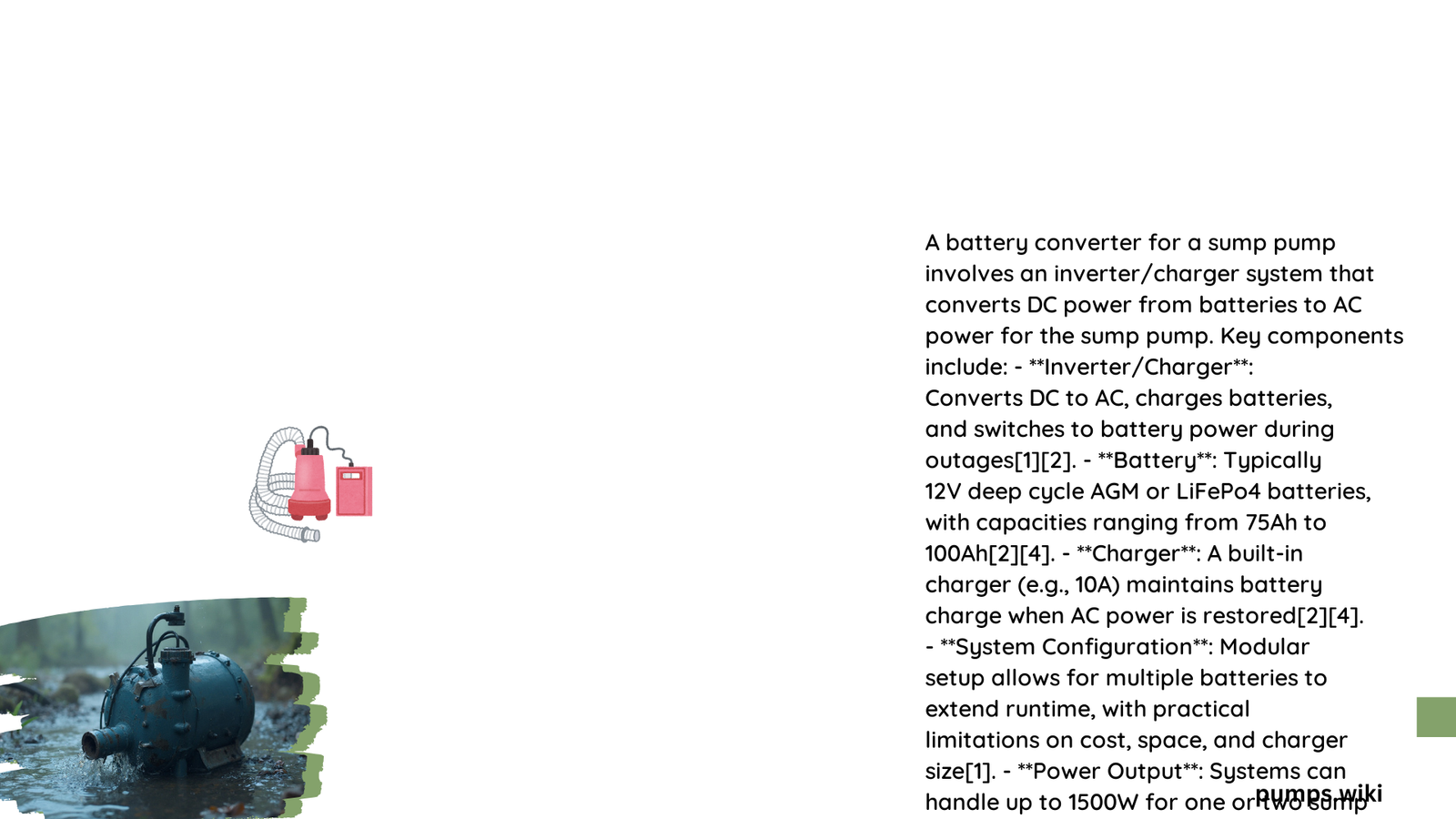A battery converter for sump pump is a critical electrical system that transforms DC battery power into AC power, enabling continuous sump pump operation during electrical failures. This sophisticated device ensures your basement remains dry by providing seamless power conversion, protecting your home from potential water damage through intelligent backup power management and automatic switching mechanisms.
What Makes a Battery Converter Essential for Sump Pump Protection?
Why Do Homeowners Need Battery Converters?
Water damage can devastate homes, causing thousands of dollars in repairs. A battery converter for sump pump provides critical protection by:
- Maintaining continuous water removal during power outages
- Preventing basement flooding
- Protecting valuable property and infrastructure
- Offering peace of mind during severe weather events
How Does a Battery Converter Work?
Battery converters function through a sophisticated process:
- Power Storage: Deep-cycle batteries store electrical energy
- Voltage Transformation: Converts 12V DC to 120V AC
- Automatic Switching: Seamlessly transitions between main power and battery backup
- Continuous Monitoring: Tracks battery charge and system performance
Technical Specifications for Battery Converters

| Parameter | Recommended Specification |
|---|---|
| Input Voltage | 12V DC |
| Output Voltage | 120V AC |
| Minimum Wattage | 800-1000 watts |
| Battery Type | Deep-cycle AGM/Sealed Lead Acid |
| Backup Duration | 4-8 hours |
What Factors Determine Battery Converter Performance?
Several critical factors influence battery converter effectiveness:
- Wattage Requirements: Match inverter capacity with sump pump power draw
- Battery Quality: Use high-capacity deep-cycle batteries
- Installation Location: Dry, ventilated area near power source
- Maintenance Frequency: Regular battery and system checks
Installation Best Practices
What Tools Are Needed for Battery Converter Setup?
Essential installation tools include:
- Inverter/charger unit
- Deep-cycle battery
- Battery cables
- 200-amp DC fuse
- Mounting hardware
- Multimeter
- Protective safety gear
How to Safely Install a Battery Converter?
Step-by-step installation process:
- Select a dry, accessible location
- Mount inverter/charger securely
- Connect battery terminals correctly
- Install DC safety fuse
- Test system functionality
- Verify automatic power switching
Cost and Maintenance Considerations
What Are the Expected Expenses?
Typical cost breakdown:
– Inverter/Charger: $300-$600
– Deep-cycle Battery: $100-$250
– Installation Materials: $50-$100
– Professional Installation: $200-$400
How Often Should Battery Converters Be Maintained?
Recommended maintenance schedule:
– Monthly: Visual system inspection
– Quarterly: Battery charge test
– Annually: Complete system evaluation
– Every 3-5 years: Battery replacement
Advanced Performance Metrics
What Performance Can You Expect?
Performance expectations:
– Backup Duration: 4-8 hours
– Battery Lifespan: 3-5 years
– Power Conversion Efficiency: 85-95%
– Automatic Transfer Speed: <10 milliseconds
Potential Challenges and Solutions
What Common Issues Might Arise?
Potential challenges include:
– Battery degradation
– Improper installation
– Insufficient wattage
– Corrosion
– Unexpected power fluctuations
Conclusion
A battery converter for sump pump represents a critical investment in home protection, offering reliable backup power during emergencies. Proper selection, installation, and maintenance ensure continuous water management and peace of mind.
